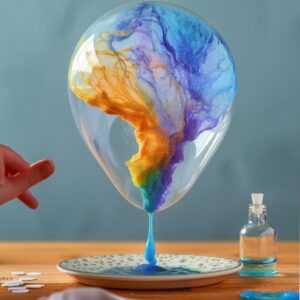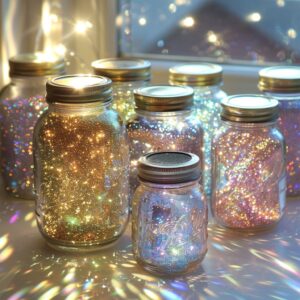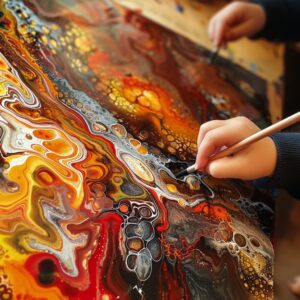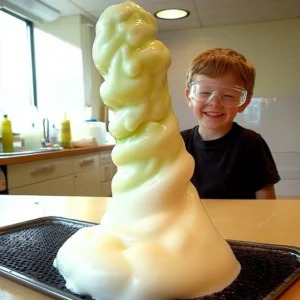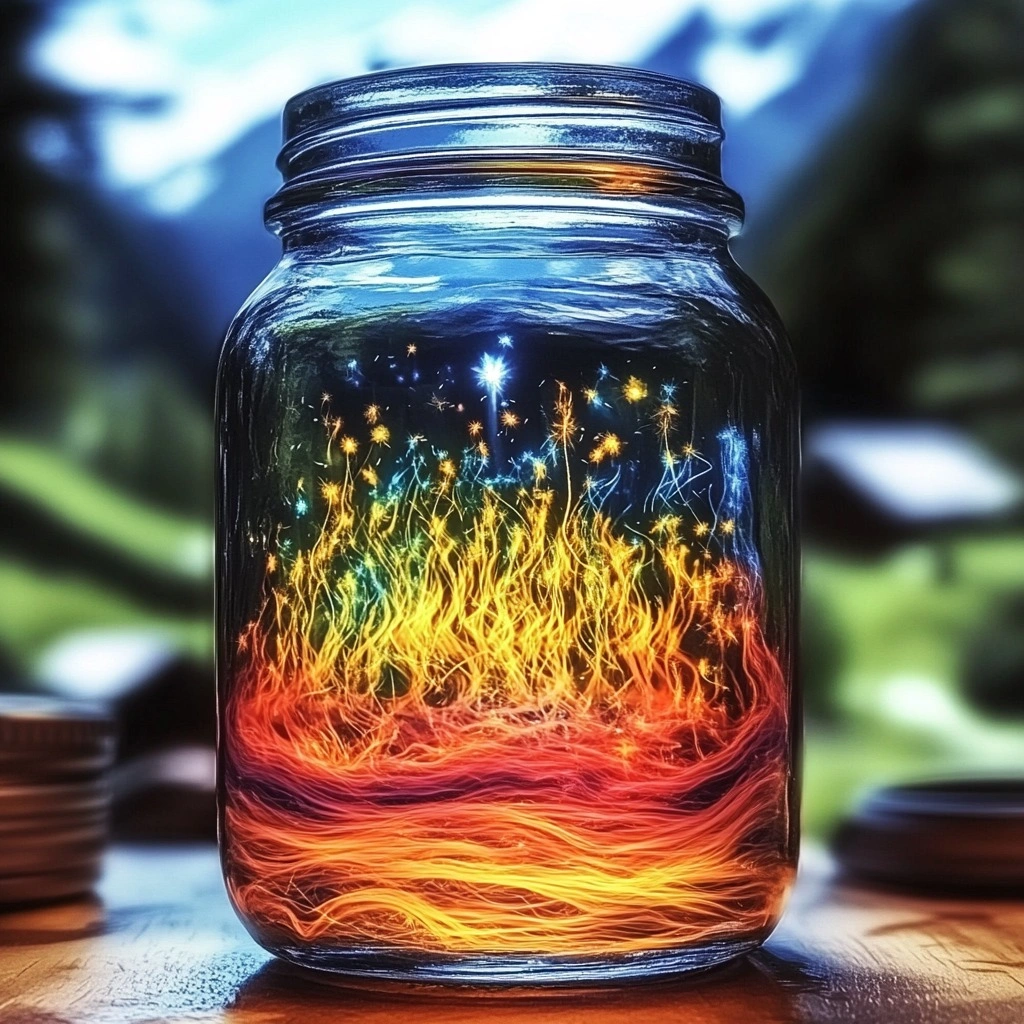
Introduction
Imagine capturing the vibrant display of fireworks within the confines of a simple glass jar. The “Fireworks in a Jar” experiment offers a captivating blend of art and science, transforming everyday kitchen items into a dazzling visual spectacle. This activity not only entertains but also educates, making it an ideal choice for parents, educators, and curious minds alike.
Why You’ll Love This Experiment
- Educational Value: Demonstrates principles of density, solubility, and molecular polarity.
- Simplicity: Utilizes common household items, ensuring easy setup.
- Visual Appeal: Creates stunning, colorful patterns reminiscent of fireworks.
- Versatility: Suitable for various occasions, from science lessons to festive celebrations.
Materials Needed
- Clear glass jar (pint-size or larger)
- 4 tablespoons of cooking oil (vegetable or canola)
- Food coloring (various bright colors)
- Water (enough to fill the jar about ¾ full)
- Small bowl (for mixing)
- Spoon or fork (for stirring)
- Paper towels (for cleanup)
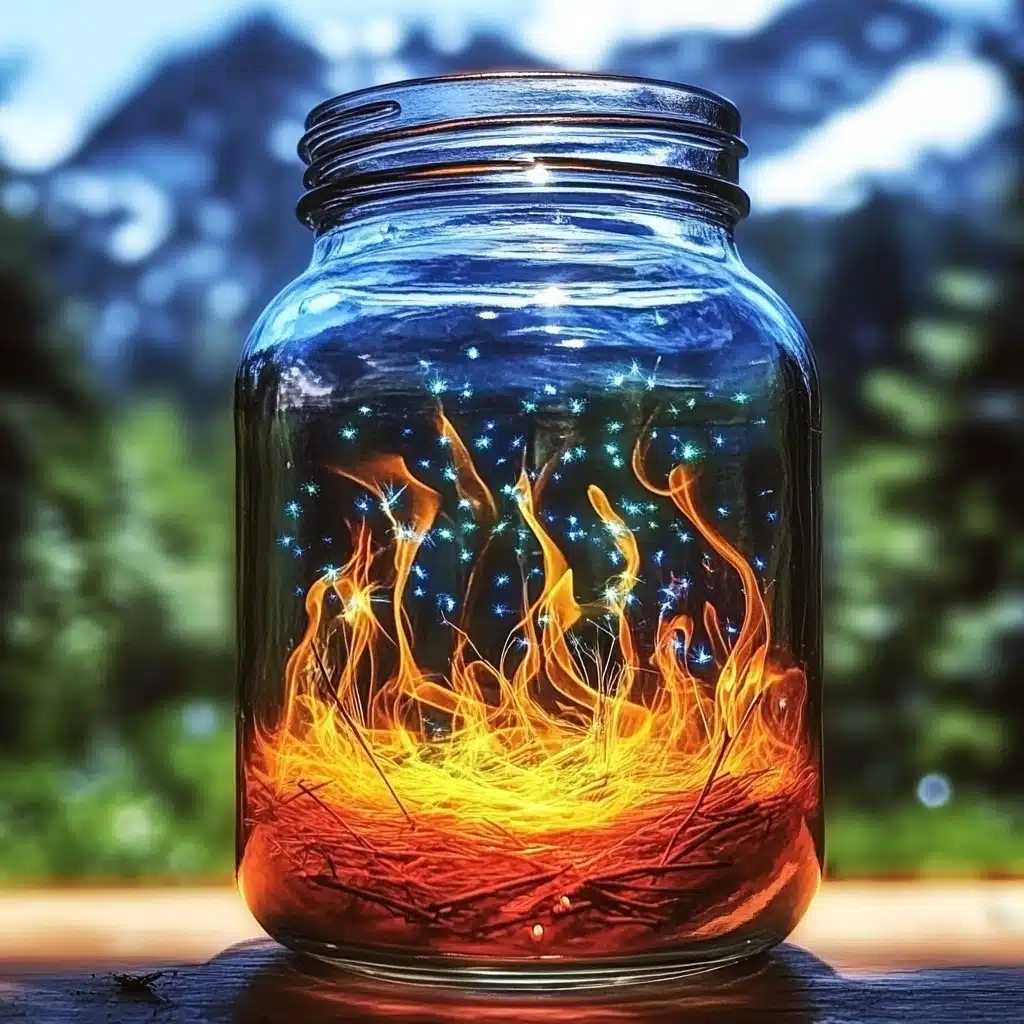
Necessary Tools
- Measuring spoons: To ensure accurate quantities of oil and water.
- Dropper or pipette: For precise addition of food coloring.
- Flashlight: Optional, to enhance visual effects in dim lighting.
Step-by-Step Instructions
- Prepare the Water Base:
- Fill the clear glass jar about ¾ full with room temperature water. Set aside.
- Create the Oil and Color Mixture:
- In the small bowl, pour 4 tablespoons of cooking oil.
- Add 3–5 drops of each chosen food coloring to the oil.
- Use the spoon or fork to gently stir the mixture, breaking up the food coloring into smaller droplets.
- Combine and Observe:
- Slowly pour the oil and food coloring mixture into the jar of water.
- Watch as the food coloring droplets sink through the oil and disperse into the water, creating a firework-like display.
The Science Behind the Magic
This experiment vividly illustrates the concepts of density and solubility:
- Density Differences: Oil is less dense than water, so it floats atop the water layer.
- Solubility: Food coloring is water-based and doesn’t dissolve in oil. When the colored droplets sink through the oil and reach the water, they dissolve, creating the “fireworks” effect.
This simple demonstration effectively showcases how substances interact based on their physical properties.
Tips for Success
- Use Warm Water: Slightly warm water can enhance the dispersion of food coloring.
- Avoid Overmixing: Gently stir the oil and food coloring to maintain distinct droplets.
- Experiment with Colors: Try different color combinations for varied effects.
- Lighting: Dim the lights and use a flashlight to illuminate the jar from below for a dramatic effect.
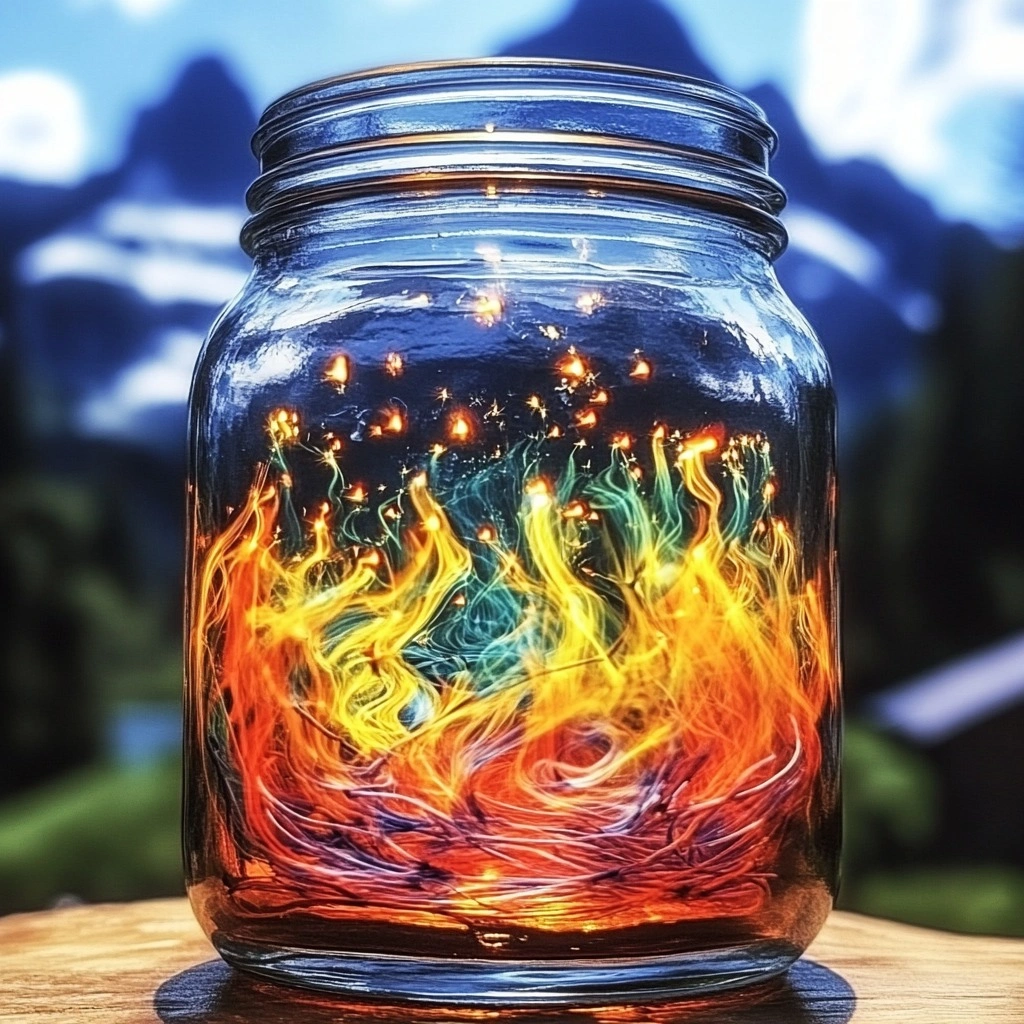
Variations and Extensions
- Temperature Experiment: Test how water temperature affects the dispersion rate of food coloring.
- Oil Types: Compare results using different oils, such as olive or coconut oil.
- Layered Fireworks: Create multiple layers by repeating the process after the initial display settles.
Safety Considerations
- Supervision: Always supervise children during the experiment.
- Clean-Up: Have paper towels ready for any spills.
- Allergies: Ensure no participants have allergies to any materials used.
Conclusion
The “Fireworks in a Jar” experiment is a delightful fusion of science and art, offering an engaging way to explore fundamental scientific principles. Its simplicity and visual appeal make it a favorite among educators and parents seeking interactive learning experiences.
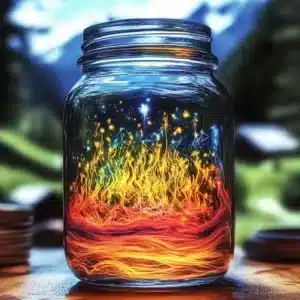
Fireworks in a Jar
Ingredients
Method
- Fill the clear glass jar about ¾ full with room temperature water. Set aside.
- In the small bowl, pour 4 tablespoons of cooking oil.
- Add 3–5 drops of each chosen food coloring to the oil.
- Use the spoon or fork to gently stir the mixture, breaking up the food coloring into smaller droplets.
- Slowly pour the oil and food coloring mixture into the jar of water.
- Watch as the food coloring droplets sink through the oil and disperse into the water, creating a firework-like display.

